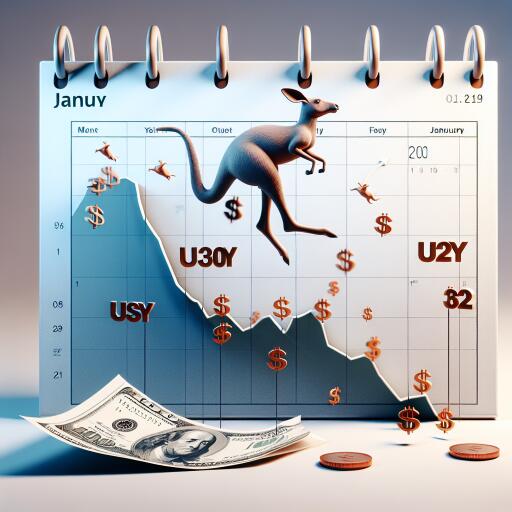Yield Curve: US30Y Jumps Above the US2Y for the First Time Since Late January
In an interesting shift within the bond market, the spread between the longer-term 30-year US Treasury yield (US30Y) and the shorter-term 2-year US Treasury yield (US2Y) has seen noteworthy movement for the first time since late January. This development comes amidst various economic trends, speculations, and analyses by financial institutions, providing a mixed but fascinating look into the potential future of interest rates and market expectations.
One of the standout observations has been the current relationship between the more discussed US2Y and the US10Y yields. Despite the continued inversion of these yields, with the spread sitting at -23 basis points, there has been a visible move towards normalization, reaching its closest levels since January 29, 2024. This development carries significant implications for investors and economists alike, as the yield curve often serves as a bellwether for economic outlook and monetary policy expectations.
From a technical analysis perspective, insights from Société Générale spotlight the recent trends of these Treasury yields. The US2Y, for instance, has experienced a breach in the lower band of its range, observed between May and June. This breach has led the 2-year yield to test the March trough of 4.44%/4.40%, aligning with a trend line that extends back to the previous year. Such movements are underpinned by a daily Moving Average Convergence Divergence (MACD) that remains in negative territory, indicating a prevailing downward momentum. Should there be a slight recovery, the 50-day moving average (DMA) around 4.74%/4.80% is anticipated to act as a significant resistance level.
On the other end of the spectrum, the yield on the 10-year US Treasury (US10Y) appears to be inching towards a support zone marked by a multi-month descending channel band around 4.13%/4.10%. While a temporary uplift in the 10-year yield is within the realm of possibility, the pivotal factor to watch would be its ability to sustain itself above the moving average near 4.38%. Such a crossover would be essential in confirming a broader uptrend in the market.
For those invested in the movements of Treasuries and bonds, these developments offer a rich area for analysis and potential investment strategy adjustment. Treasury-focused exchange traded funds (ETFs) and other fixed income ETFs present avenues for proxy investments, allowing market participants to navigate the fluctuating landscapes of interest rates and bond yields. These instruments can serve as critical components in a diversified investment portfolio, offering insights and exposure to the underlying trends within Treasury markets.
As the situation evolves, keeping an eye on these dynamics will be crucial for investors seeking to understand and capitalize on the shifts in the Treasury market. With the yield curve providing nuanced signals about economic expectations and interest rate directions, the current trends underscore the importance of vigilant analysis and strategic planning in navigating the complexities of the bond market.
